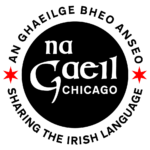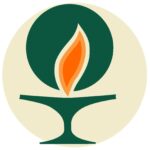In 1965, the great theologian Howard Thurman published a book entitled The Luminous Darkness, expressing his reflections on the spiritual meaning of the civil rights movement and desegregation. Commenting on Brown v Board of Education 1954, he wrote:
This is the taproot of the society and here it was declared that all children must be free to learn to live together with easy access to one another while the mind is developing and the heritage of the culture is being transmitted.
I was born four years later in December 1969. Raised in Oak Park, a community that intentionally embraced integration, my generation should have (in Thurman’s words) “sounded the death gong for the pattern of segregation in all its far-flung and complex dimensions.” Unfortunately, that was not the case. It turns out that structural racism is not that easy to abolish.
It is true that the seed of a new social pattern was planted. I did grow up knowing children from diverse backgrounds, simply for who they are. But, Oak Park, like America, still has a long ways to go. As I’ve written about before, I witnessed the lives of children still trapped by segregation. I witnessed police misconduct and the hurt that it caused—in particular, to one nameless boy whose tears will forever be etched in my memory. From that point onward, I knew that my life was different and privileged. I’ve struggled ever since to figure out what to do with that, even as I’ve wrestled with my own implicit biases.
This past week, it’s all come rushing back as I watch BLM protests unfold across the country and as I participate in rallies here in the Fox Valley. I’m having difficulty focusing at work—or, for that matter, on other responsibilities at home or at church. I dwell on the potential of this moment as I listen to the same, tired sectarian arguments repeat over and over. I wonder, will we ever get there? What will it take to finally ring that death gong?
For more than 30 years, I’ve thought about this. I know that my angst pales in comparison to the painful questions of Black folks. Yet, my heart keeps coming back to the changes that must occur for us to see this pain—and its cure. I come back to Howard Thurman and the conclusions he came to more than 50 years ago:
When I identify with a man, I become one with him and in him I see myself. I remember a quotation out of the past–the statement “know thyself” has been taken more mystically from the statement, “thou hast seen thy brother, thou has seen thy God.” This is the true meaning of…listening to the sound of the genuine in another…. It is a probing process of trying to find the opening into another. And it requires exposure, sustained exposure. One of the great obstacles to such exposure is the fact of segregation.
The religious experience as I have known it seems to swing wide the door, not merely into Life but into lives….
“…Not merely into Life but into lives.” — lives that matter at the deepest and most profound level. As Thurman said, “[we] are made for one another.”

